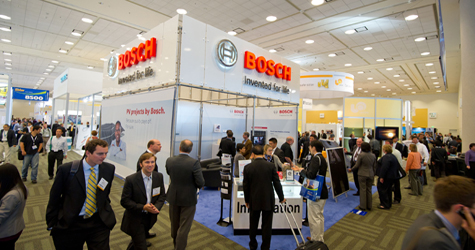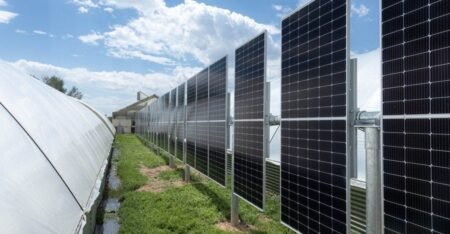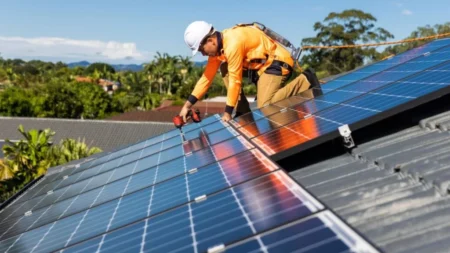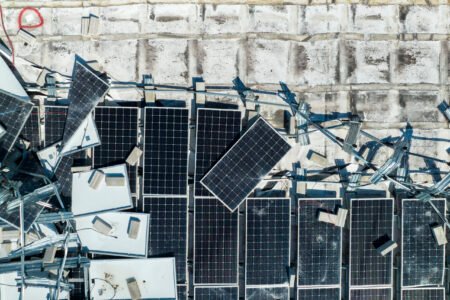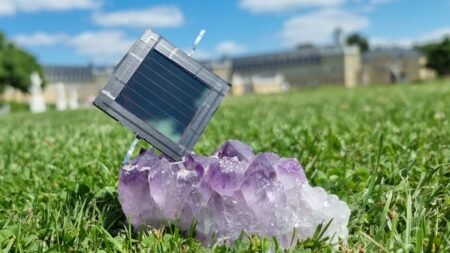Chuck Provini, President and CEO of Natcore Technology Inc. (TSX-V: NXT; NTCXF.PK) says it’s time for solar cell manufacturers to lift their sights if they are to survive in today’s marketplace. The challenge was made yesterday in a presentation to a group of Palm Beach asset managers.
Commercial-grade cells typically have efficiencies in the mid-to-high teens. Provini claims that a low-cost solar cell with routine efficiency of 25% or more is within reach, and this will completely transform the world’s energy paradigm.
Efficiency is the ratio of the electrical output of a solar cell to the incident energy reaching it in the form of sunlight. So a higher efficiency means that a cell is producing more energy; consequently, solar cell manufacturers are waging a constant struggle to increase their efficiencies in their drive to make solar energy truly competitive with energy derived from fossil fuels.
One manufacturer – SunPower – produces commercial cells with efficiencies up to 24%. Another – Panasonic – has demonstrated a laboratory cell with an efficiency that exceeds 25%. But both have shortcomings in the highly competitive solar cell market.
Panasonic’s typically commercial solar cells are “HIT-structure” (heterojunction with intrinsic thin layer) solar cells. Their original HIT cell has contacts on the cell’s back and front, which lowers their efficiency because the front contacts occupy real estate that could be devoted to absorbing solar energy. That cell is still sold commercially and offers an efficiency ranging from 20% to 21%.
Panasonic also made an all-back contact HIT cell, which reached a record efficiency of 25.6%, but does not produce such cells commercially because the fabrication process is very complicated and costly.
The SunPower cells have all back contacts, but are not HIT-structured. They are made with super-high quality silicon, and they require a complex set of steps to mount the contacts to the silicon. Those two factors make the SunPower cells the most expensive silicon cells on the market. They are being widely manufactured and sold today, albeit at a cost that’s 50% higher than that of common commercial cells.
“We believe that Natcore, with its latest achievements in the lab, has overcome the deficiencies of existing HIT-structure cells,” says Provini. “By applying all of the contacts to the rear of the cell, we should increase efficiency. By using a laser in applying the contacts, we greatly simplify the process and lower its cost.
“We believe we can provide what’s needed to take HIT-structure cells to a 25% efficiency or greater. Furthermore, it’s actually easier for our process to make a silicon HIT-structure cell with back contacts. The Natcore cell would sharply lower both the cost/watt and the environmental damage that is associated with traditional solar cell manufacturing.”
Dr. Dennis Flood, who did pioneering work on advanced solar cells for space applications when he was Chief of the Photovoltaic and Space Environments Branch at NASA, says, “Even though it’s not commercial, the Panasonic all-back-contact HIT cell, with an efficiency above 25%, heralds an impending paradigm shift in the photovoltaic solar industry that is unprecedented. This accomplishment raises the bar for all competing solar cell technologies, from the various thin film cells currently in production to laboratory cells made from all the new materials under investigation. The issues are always and fundamentally cell producibility and cost. HIT cells with laser processed back contacts, as are being developed by Natcore scientists, will excel at both.” Dr. Flood is a co-founder of Natcore, and is the company’s Chief Technology Officer.
Source: Natcore Technology





